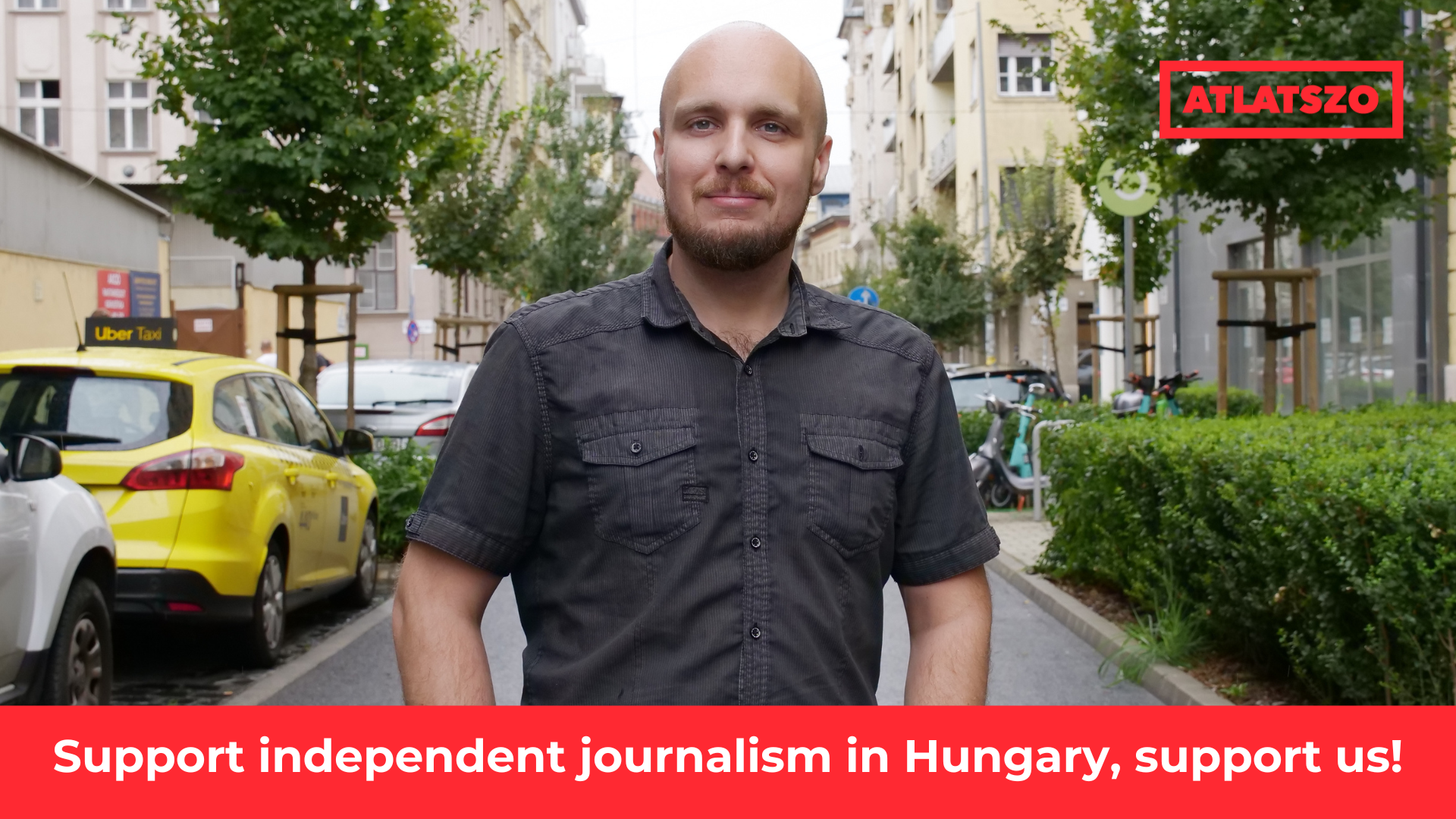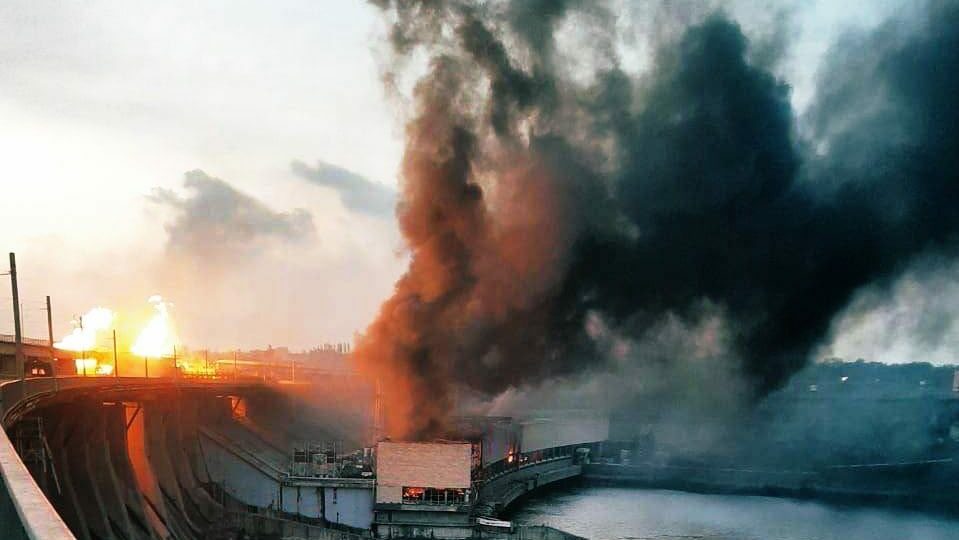The https://english.atlatszo.hu use cookies to track and profile customers such as action tags and pixel tracking on our website to assist our marketing. On our website we use technical, analytical, marketing and preference cookies. These are necessary for our site to work properly and to give us inforamation about how our site is used. See Cookies Policy
Russian Roulette in Energy Security: Hungary, Ukraine, and Russian dependence
Energy security has become a strategic issue in Europe since the outbreak of the war in Ukraine. However, Hungary is taking a different path. While the EU is seeking to reduce its dependence on Russian energy, Hungary continues to rely on Russia, which brings economic benefits in the short term but increasing vulnerability in the long term. The question is how long this balance can be maintained, when a new front with the EU will open up, while Hungary’s energy security is at stake.
Hungary’s energy supply has been heavily dependent on Russian imports for decades, which essentially limits the Hungarian government’s room for maneuver. However, Russia’s war against Ukraine, the EU’s response of imposing sanctions and its efforts to phase out Russian energy sources, as well as the restructuring of the global energy market, have created an opportunity for Hungary to reduce and potentially eliminate its dependence on Russia. Hungary, however, has chosen a different path, and based on government communications, it intends to pursue this path.

“We could bring about the collapse of Ukraine in a single day… If a few pillars fall and a cable break, Ukraine will come to a standstill,”
Viktor Orbán said in August. Although the prime minister was talking about electricity and gas supplies, attacks on the Druzhba oil pipeline also appeared on the agenda in Ukrainian-Hungarian relations.
Oil war and drone attacks
The Ukrainian army regularly targets the pipeline’s distribution stations in Russia, and while repairs are underway, deliveries to Hungary and Slovakia have been halted, affecting MOL’s two refineries, which were originally optimized for processing Russian crude oil types.
In recent weeks, Péter Szijjártó, Minister of Foreign Affairs and Trade, has made a series of statements suggesting that the attacks are specifically aimed at jeopardizing Hungary’s energy supply. The diplomatic messaging escalated to the extent that Szijjártó threatened consequences for anyone who launched attacks against the security and sovereignty of Hungary’s energy supply. With the same momentum, he banned Robert Brovdi, commander of the Ukrainian drone unit, nicknamed “the Hungarian,” from the Schengen area.
Brovdi retaliated, saying that Szijjártó was “not defending the sovereignty of Hungary, but his own dirty pockets”.
After further attacks in September, the Ukrainian high command made it clear that Hungary was not the target. The heavily attacked Bryansk distribution station in Russia is of strategic importance in supplying Russian and Belarusian refineries, and the aim of the operation was to reduce Russia’s offensive potential and hamper the supply of fuel and ammunition, thus weakening the Russian war machine. Indeed, while Russian gas continued to flow uninterrupted through Ukraine to Europe until the end of 2024, the gas pipelines were not attacked. Kiev did not want to lose transit fees and sought to maintain good relations with its European partners.
In this context, Russian gas is primarily a foreign trade product, but crude oil not only generates revenue from sales, it also directly supports the movement of Russian troops. Ukraine is therefore targeting the Russian oil industry with drones, which is already having noticeable consequences, with fuel shortages occurring in some regions.
Captive to a single pipeline
The disruptions in Hungary’s oil supply are therefore an indirect consequence of the war. From an energy security perspective, however, it poses a serious risk that the country depends on a single pipeline, the Druzhba, which comes from one country at war and passes through another country at war, both of which have been fighting each other since February 2022. Since then, Hungary has not yet found a solution to reduce its vulnerability to the fighting and secure an alternative route for fuel supplies.
An alternative would be the Adria pipeline from Croatia, but the government argues that its capacity is insufficient for MOL’s refineries in Slovakia and Hungary. Croatia disputes this. Borbála Takácsné Tóth, senior researcher at the Regional Centre for Energy Policy Research (REKK) sees testing the pipeline as a solution, which would reveal its actual technical limits and could also open negotiations on transit fees.
According to the G7 news site, testing took place in 2023 and it was found that the pipeline is capable of transporting 1.2 million tons of crude oil per month, thus fully supplying MOL’s two refineries. This capacity represents 14 million tons of crude oil per year, while the two refineries require 11-12 million tons per year.
However, Adria would also pose technological challenges:
the crude oil arriving here has a different composition, so the refineries would have to be converted,
which could lead to a temporary reduction in capacity. But this switch is unavoidable, as the European Commission plans to phase out Russian energy sources completely by the end of 2027. Hungary can stall until then, but the risks of war cannot be ignored indefinitely.
Growing dependence on Russia instead of sanctions
Hungary has so far taken advantage of its exemption from EU sanctions, shared with Slovakia, allowing it to continue purchasing Russian oil and gas via pipelines. However, this effectively helps finance the war machine and maintains energy dependence. The EU’s intention with the exemption was to grant the two countries a grace period to reduce reliance on Russian sources. In contrast, Hungary has increased its dependence on Russian oil from 61% before the war to 86% by 2024, while Slovakia has maintained an almost 100% dependence.
Overall, the exemptions granted to the two countries have weakened the sanctions, especially since they have repeatedly threatened vetoes and defended the use of Russian energy. The European Commission plans to fully phase out Russian energy imports under its REpowerEU program, which cannot be vetoed by member states, meaning Hungary will eventually have to adapt.
According to a study on phasing out Russian oil and gas in Central Europe,
since February 2022 Hungary’s and Slovakia’s imports of Russian oil have generated 5.4 billion euros in tax revenue for Russia, enough to purchase 1,800 Iskander-M missiles.
Another major beneficiary of these oil deals is MOL, whose profits have increased by 30% compared to pre-war levels despite the conflict and above-average fuel prices in Hungary. The study concludes that MOL functions as a tool of Russian influence in the region and is expanding across Central and Southeastern Europe.
Calculations published by G7 news site around the same time last year show similar results: between the Russian invasion of Ukraine in February 2022 and May 2024, Hungary, Slovakia, and MOL obtained Russian oil roughly 1.4 trillion forints cheaper than the EU average. This suggests that the two countries and MOL have a vested interest in maintaining the economic advantage of importing Russian oil for as long as possible.
Ukrainian energy infrastructure under attack
Since February 2022, Russia has been systematically targeting Ukraine’s entire energy supply system. For strategic reasons, Ukraine does not disclose detailed information about the damage to its infrastructure, but publicly available reports indicate the destruction is severe. In November 2024 alone, just before the typically harsh winter, Russia launched over 350 missiles and 2500 drones against Ukraine’s energy network.
By the end of 2024, the estimated damage to Ukraine’s energy infrastructure (including heating, electricity, oil, and gas systems) had reached 20.5 billion US dollars, while the cost of reconstruction was projected at 67.8 billion US dollars. Adding up the occupied, destroyed, and damaged facilities, Ukraine has lost about 27 GW of its pre-war installed capacity of 56.1 GW. As a result, both civilians and the wider economy entered the past winter with less than half of their previous energy production capacity, forcing authorities to impose power restrictions.
Integration of Ukraine into the European grid
Meanwhile, Ukraine has taken decisive steps to reduce Russian influence in its energy sector. In March 2022, the Ukrainian (and Moldovan) electricity grid was disconnected from the Russian system and synchronized with the continental European network.
Hungary, as a neighbouring country, is an important partner for Ukraine, but the EU’s decision to synchronize the grids was primarily a gesture of solidarity, and has no significant impact on the European system as a whole, including the Hungarian network. For Ukraine, however, it provides stability and greater security of supply, while offering the EU cheaper import opportunities, said András Mezősi, senior researcher at REKK.
Overall, Ukraine imports relatively small amounts of electricity, so a halt in deliveries from Hungary would only account for 1–2% of its total consumption.
Similarly, roughly 1.5% of Hungarian consumption comes from Ukraine, so if trade with Hungary were interrupted due to a Ukrainian decision, it could be managed through regulation and would have little impact on either security of supply or prices.
The ongoing war in Ukraine does not significantly affect Hungary’s energy security in terms of electricity supply: closing the borders is not technologically feasible, as the EU’s system is interconnected and operates like a spider’s web, so if one connection fails, electricity reaches consumers via alternative routes, explained Mezősi. Therefore, even if Russian energy is fully phased out of the EU market by the end of 2027, Hungary’s security of supply will not be compromised.
Hungary also purchases nuclear fuel for the Paks nuclear power plant from Russia, but these supplies are replaceable. Fuel can be stockpiled for one or two years or purchased from alternative sources. While this presents technological challenges and may be somewhat more expensive, it is by no means impossible.
Tools for a more stable system
Several measures are needed to enhance the security of Hungary’s electricity supply. According to András Mezősi, increasing the share of wind energy is important, as it complements solar power by generating electricity at night and in winter, creating a more balanced and sustainable energy mix. Developing energy storage is also crucial, as it can offset the fluctuations of renewable sources, and the technology is close to market viability. Developing the electricity grid is equally essential, as it enables the deployment of future technologies, such as heat pumps and electric vehicles. Hungary has begun investing in this area, but so far, the developments primarily serve industrial consumers, while residential needs remain secondary.
András Kéri, executive director of Energiaklub, added that all domestically produced energy strengthens the country’s sovereignty, highlighting the need to further develop geothermal energy, biogas utilization, and battery storage capacities. Improving energy efficiency is also key, as the safest energy is the energy that is not consumed.
The spread of renewable energy sources not only supports climate protection in the long term but also reduces import dependence and strengthens energy security.
Integrated gas market, more stable supply
Ukraine’s natural gas supply is a more complex issue than electricity, but it is not typical for the market that the Ukrainian economy could collapse overnight. The more integrated the market, the greater the security of supply. Both Hungary and Ukraine are part of the unified EU market, which also regulates transport.
According to Borbála Takácsné Tóth, as long as Vladimir Putin remains in power, the EU cannot cooperate with Russia. However, if the situation normalizes, 10–20% of EU gas imports could safely come from Russia, though the pre-war level of 40% should definitely not be repeated.
In 2021, the EU covered 83% of its natural gas demand through imports. After the outbreak of the war in 2022, and in preparation for winter, the EU began diversifying its gas supply, while Russia significantly reduced its gas exports to the EU. Until the second half of 2021,
Russia’s market share was around 50%, but by August 2022 it had fallen to 17.2% and by November to 12.9%.
At the same time, the EU reduced its gas consumption by 15%. Most of the lost Russian gas was replaced with LNG, primarily sourced from the United States, as well as Norway, Algeria, Qatar, and Nigeria, while Russian LNG continues to be purchased.
It is often argued that Europe’s energy security does not improve if Russian gas imports are replaced with American gas, as one dependency is simply exchanged for another. According to Borbála Takácsné Tóth, this concern is unfounded because the LNG market operates differently. While the United States is indeed interested in sales as a net exporter, there are many players in the market, and LNG can be transported flexibly. “The ships are steered wherever they are needed.”
European and Hungarian gas imports, especially LNG procurement, are now not only an energy policy issue but also a strategic and security concern. U.S. Energy Secretary Chris Wright urged Europe, particularly Hungary and Slovakia, to stop buying Russian energy and instead rely on American or other allied sources. “The more we can strangle Russia’s ability to fund this murderous war, the better for all of us.” He also emphasized that technology from the United States or the EU should be preferred over Russian nuclear energy.
Alternative routes for supplying Ukraine
Since Russia’s 2022 invasion, Ukraine has lost its eastern territories and a significant part of its heavy industry, leading to reduced sectoral consumption and weakened production capacities. In early September 2025, Ukrainian gas storage facilities were nearly 22% full, equivalent to 6.5 billion cubic meters. By comparison, European storage was at 77% during the same period. Currently, Ukraine’s storage levels, which have recently been increased in preparation for winter, are approaching optimal levels.
Therefore, if Hungary were to stop supplying gas to Ukraine, as indicated by government statements, the necessary volumes could be ensured via Poland and Slovakia. Ukraine’s economy would not collapse from such a measure, although temporary disruptions could occur.
Long-term Hungarian contracts
In 2021, Hungary signed a ten-year long-term gas supply contract with Gazprom, tied to prices on the Dutch gas exchange. While such contracts provide stability, they limit diversification and do not necessarily guarantee cheaper gas. The Dutch price trends over the past five years clearly show that long-term agreements do not shield Hungary from market volatility.
Hungary’s gas pipeline connections are strong, and it could purchase gas from alternative sources, though at a somewhat higher price due to increased transport costs. As part of the unified European gas market, however, Hungary’s supply remains secure as long as there is enough gas in Europe.
Diversification still seems distant: Hungary’s and Slovakia’s dependence on Russian gas rose from 57% in 2021 to 70% in 2024. Although the two countries reduced pipeline imports from Russia by 5.5%, the rest of the EU achieved an 81% reduction. Instead, Hungary and Slovakia increased Russian imports through the Turk Stream pipeline, positioning themselves as Central and Southeastern European gas hubs.
This undermines the EU’s diversification goals, enables opaque, speculative transactions, and strengthens Russian influence in the region.
Ultimately, the primary goal of energy security is to ensure a stable energy supply. In the long term, however, maintaining energy security must also account for the effects of climate change. Yet, these two goals do not always align: reducing emissions does not necessarily enhance energy security, and improving security may not always lower emissions.
The issue of Russian import dependence highlights how each actor interprets energy security according to its own fears and interests: for the EU, it is a security risk; for Hungary, an opportunity for cheaper energy; for Russia, a source of revenue; for Ukraine, a strategic tool where diversification and sanctions act as indirect weapons; and for the United States, a chance to expand markets and exert geopolitical influence.
This article was originally published in Hungarian as a two-part series written by Melinda Zsolt. Part 1 can be found here and Part 2 can be found here. Data visualization by Krisztián Szabó. Cover photo: the Dnipro hydroelectric power plant damaged by Russian missiles on March 22, 2024, Ukraine.

